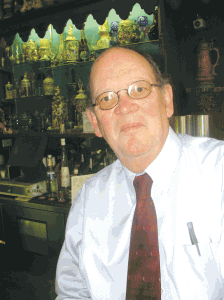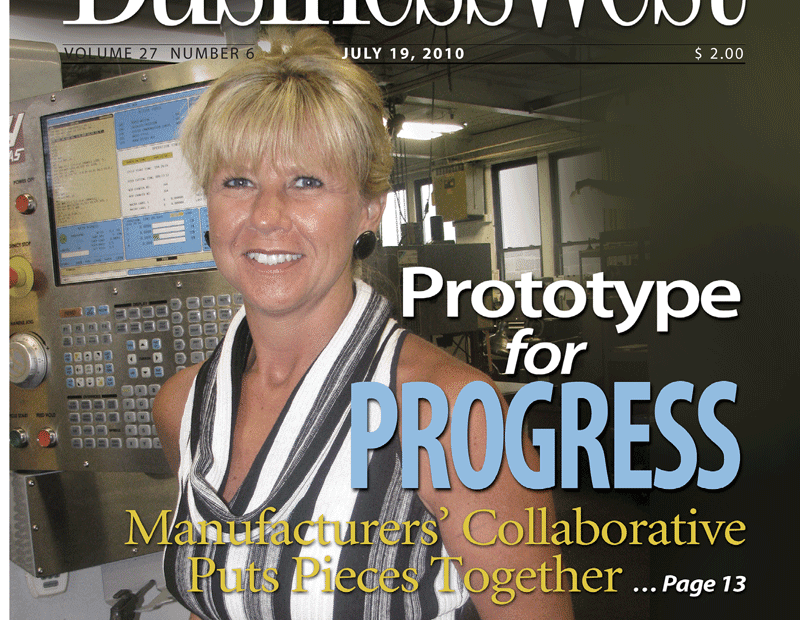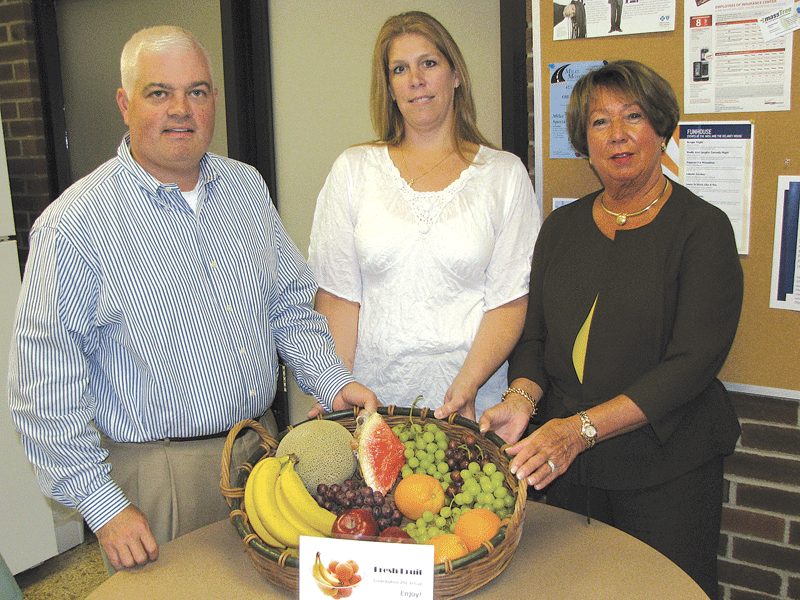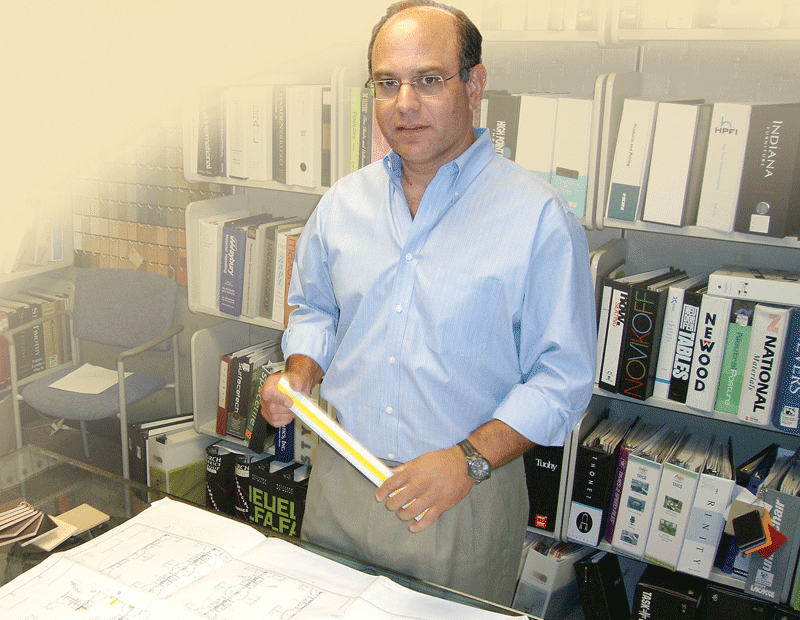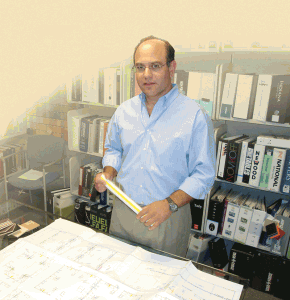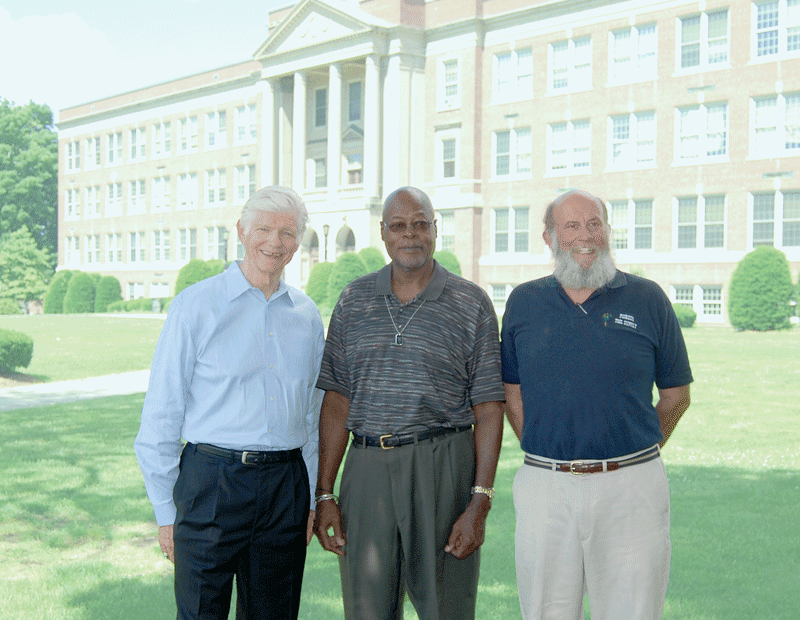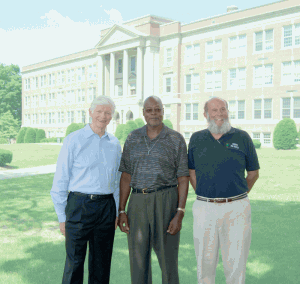| Alimonos, Angela C.
1 Maplewood Ter.
Hadley, MA 01035
Chapter: 7
Filing Date: 05/21/10 Allen, Carl E.
196 Eddy St.
Springfield, MA 01104
Chapter: 7
Filing Date: 05/20/10 Allyn, William D.
2 Hawthorne Lane
Holyoke, MA 01040
Chapter: 13
Filing Date: 05/19/10 Anderson, Laurie L.
50A Indian Leap St.
Indian Orchard, MA 01151
Chapter: 7
Filing Date: 05/24/10 Armstrong, Pearlann M.
6 Harding Ave.
Adams, MA 01220
Chapter: 7
Filing Date: 05/18/10 Audet, Dawn M.
54 Fairview Ave.
Russell, MA 01071
Chapter: 13
Filing Date: 05/24/10 Barnett, Mychael
14 Berkeley St.
Springfield, MA 01109
Chapter: 7
Filing Date: 05/28/10 Barry, Kevin T.
Barry, Sherry A.
56 Highland Ave.
Chicopee, MA 01013
Chapter: 7
Filing Date: 05/21/10 Baughn, Anthony E.
Baughn, Koren D.
a/k/a Velis, Koren D.
5 Radner St.
Springfield, MA 01129
Chapter: 7
Filing Date: 05/19/10 Beach, Robert Stephen
174 River St., Apt. #2
West Springfield, MA 01089
Chapter: 13
Filing Date: 05/28/10 Berry, Sally J.
270 East Main St.
Orange, MA 01364
Chapter: 7
Filing Date: 05/28/10 Bewsee, Darrel A.
25 Collins St.
Westfield, MA 01085
Chapter: 7
Filing Date: 05/24/10 Bohl, Sarah J.
450 Church St.
North Adams, MA 01247
Chapter: 7
Filing Date: 05/24/10 Bonet, Myrta
2074 Page Blvd.
Indian Orchard, MA 01151
Chapter: 7
Filing Date: 05/21/10 Bongiovanni, Suzanne
389 Montague City Road
Turners Falls, MA 01376
Chapter: 7
Filing Date: 05/27/10 Boulanger, Timothy N.
Boulanger, Dawn M.
201 Drexel St.
Springfield, MA 01104
Chapter: 7
Filing Date: 05/21/10 Bourgeois, Robert D.
Bourgeois, Elaine B.
a/k/a Haley, Elaine
28 Stanley Court
Chicopee, MA 01020
Chapter: 7
Filing Date: 05/19/10 Boutin, Christopher Daniel
4 Mellinger Lane
Chicopee, MA 01022
Chapter: 7
Filing Date: 05/28/10 Brock, Charles
140 Avondale Road
Longmeadow, MA 01106
Chapter: 7
Filing Date: 05/28/10 Brown, Edward P.
Brown, Donna L.
20 Winthrop St.
Palmer, MA 01069
Chapter: 7
Filing Date: 05/19/10 Brown, Patricia C.
a/k/a Washington, Patricia Chauntay
P.O. Box 386
Springfield, MA 01101
Chapter: 7
Filing Date: 05/17/10 Bussiere, Maureen A.
485 South St.
Holyoke, MA 01040
Chapter: 7
Filing Date: 05/28/10 Cabot, Sarah J.
PO Box 332
East Longmeadow, MA 01028
Chapter: 7
Filing Date: 05/28/10 Callaghan, Sean Eric
4 Plymouth St.
Pittsfield, MA 01201
Chapter: 7
Filing Date: 05/20/10 Camp, Vincent
28 Chester St.
West Springfield, MA 01089
Chapter: 7
Filing Date: 05/17/10 Campbell, Roy H.
78 Lachine St.
Chicopee, MA 01020
Chapter: 7
Filing Date: 05/21/10 Carle, Irene E.
19 Congress St., Apt. 14
Greenfield, MA 01301
Chapter: 7
Filing Date: 05/17/10 Chase, Steven M.
Chase, Marietjie S.
268 Brattleboro Road
Bernardston, MA 01337
Chapter: 7
Filing Date: 05/20/10 Chiz, Stanley P.
Phillips-Chiz, Vickie M.
96 Elliot St.
Springfield, MA 01105
Chapter: 7
Filing Date: 05/24/10 Clark, Kelly L.
927 Burt Hill Road
Tolland, MA 01034
Chapter: 13
Filing Date: 05/31/10 Clifford, Joan Barbara
437 East Mountain Road
Westfield, MA 01085
Chapter: 7
Filing Date: 05/17/10 Conroy, William E.
Conroy, Brenda E.
113 Mountainview St.
Ludlow, MA 01056
Chapter: 7
Filing Date: 05/24/10 Copenhaver, Katie Ann
a/k/a Yiznitsky, Katie Ann
18 Crow Hill Road
Monson, MA 01057
Chapter: 7
Filing Date: 05/19/10 Coppola, Alfred R.
800 Stockbridge Road #10
Lee, MA 01238
Chapter: 7
Filing Date: 05/19/10 Costa, Russell D.
Costa, Jennifer T.
108 Cherokee Dr.
Springfield, MA 01109
Chapter: 7
Filing Date: 05/21/10 Cote, James J.
Cote, Donna M.
179 Chicopee St.
Granby, MA 01033
Chapter: 7
Filing Date: 05/19/10 Cote, Kenneth R.
Cote, Barbara J.
106 Paulk Ter.
Springfield, MA 01128
Chapter: 7
Filing Date: 05/18/10 Craig, James Ramsey
Craig, Rebecca March
20 Abbot St.
Greenfield, MA 01301
Chapter: 7
Filing Date: 05/19/10 Creative Freelance Studio
Susan Simonds Photography
Simonds, Susan D.
a/k/a Hellmann, Susan D.
142 Barna St.
Ludlow, MA 01056
Chapter: 7
Filing Date: 05/27/10 Cremonti, James J.
Cremonti, Cherie L.
88 Lancaster Ave.
West Springfield, MA 01089
Chapter: 7
Filing Date: 05/21/10 Danczak, Robert F.
a/k/a Danczak, Frederick R.
P.O. Box 1087
Southwick, MA 01077
Chapter: 7
Filing Date: 05/24/10 Dan’s Oil & Muffler
Crystal Car Care Center
Copenhaver, Daniel Dean
31 Daniel Square
Belchertown, MA 01007
Chapter: 7
Filing Date: 05/19/10 Davis, Judith C.
3 Gardner Road
Chicopee, MA 01013
Chapter: 7
Filing Date: 05/19/10 Denis, Robert B.
85 Dunsany Dr.
Longmeadow, MA 01106-2731
Chapter: 7
Filing Date: 05/31/10 DeOliveira, Adriana C.
a/k/a Silva, Adriana C.
89 Edward St.
Medford, MA 02155
Chapter: 7
Filing Date: 05/27/10 Devaine, Thomas
46 Marmand Court
Springfield, MA 01129
Chapter: 7
Filing Date: 05/17/10 Donicz, Carol L.
40 Highland Village
Shelburne Falls, MA 01370
Chapter: 7
Filing Date: 05/20/10 Donohue, Evelyn R.
582 Adams Road
Oakham, MA 01068
Chapter: 7
Filing Date: 05/27/10 Dowd, James
Dowd, Pamela
57 Newton Road
Springfield, MA 01118
Chapter: 7
Filing Date: 05/28/10 Dowjat, Michael S.
Dowjat, Mary H.
119 Lovell Road
Holden, MA 01520
Chapter: 13
Filing Date: 05/24/10 Driben, Robin Jill
266 Grove St.
Northampton, MA 01060
Chapter: 7
Filing Date: 05/18/10 Drown, Raymond C.
354 Miller St.
Ludlow, MA 01056
Chapter: 7
Filing Date: 05/21/10 Drozdal, John T.
Drozdal, Lucyna B.
17 Concord Dr.
Easthampton, MA 01027
Chapter: 7
Filing Date: 05/27/10 Duval, Marcia M.
113 Forest Glen
West Springfield, MA 01089
Chapter: 7
Filing Date: 05/18/10 Electrolysis by Athena
Barbieri, Lorraine Marie
50 Sheffield Dr.
Belchertown, MA 01007
Chapter: 7
Filing Date: 05/24/10 Emond, Gary P.
Mason Emond, Charissa M.
695 Bernardston Road
Greenfield, MA 01301
Chapter: 7
Filing Date: 05/20/10 Esty, Xavier
45 Manor Court
Springfield, MA 01118
Chapter: 7
Filing Date: 05/28/10 Fazio, Antonio Gerard
Fazio, Christine Marie
197 Greenacre Ave.
Longmeadow, MA 01106
Chapter: 7
Filing Date: 05/28/10 French, Lawrence R.
French, Loretta J.
52 Michael Dr.
South Hadley, MA 01075-3024
Chapter: 7
Filing Date: 05/18/10 Galarneau, Donna J.
93 Grochmal Ave., Lot 3
Indian Orchard, MA 01151
Chapter: 7
Filing Date: 05/17/10 Galindez, Jose
23 Willow, St.
Holyoke, MA 01040
Chapter: 7
Filing Date: 05/28/10 Garvey, Mary Lou
97 Mooreland St.
Springfield, MA 01104
Chapter: 7
Filing Date: 05/26/10 Gattoni, James M.
421 North Main St.
Leeds, MA 01053
Chapter: 7
Filing Date: 05/26/10 Gauthier, Jason S.
Gauthier, Jennifer L.
856 Old Keene Road
Athol, MA 01331
Chapter: 7
Filing Date: 05/20/10 Giardina, Bartholomew S.
459 School St.
Athol, MA 01331
Chapter: 7
Filing Date: 05/21/10 Gillen, Paul T.
147 Podunk Road
Sturbridge, MA 01566
Chapter: 7
Filing Date: 05/18/10 Goodine, Robert A.
Goodine, Laurie A.
420 Mayo Road
Orange, MA 01364
Chapter: 7
Filing Date: 05/28/10 Gormley, Jennifer R.
37 Craig Drive, Apt. 0-1
West Springfield, MA 01089
Chapter: 7
Filing Date: 05/24/10 Gougeon, Kelly S.
a/k/a Hoffmeyer, Kelly S.
13 Old Chesterfield Road
Williamsburg, MA 01096
Chapter: 7
Filing Date: 05/19/10 Griswold, Jon F.
Griswold, Marilyn E.
34 Anderson Road
Shelburne Falls, MA 01370
Chapter: 7
Filing Date: 05/26/10 Guy, Raymond P.
64 Felix St.
Chicopee, MA 01020
Chapter: 7
Filing Date: 05/19/10 Gwozdzik, Jennifer R.
231 River Dr.
Hadley, MA 01035
Chapter: 7
Filing Date: 05/24/10 Hall, John
Hall, Renee
58 Spring St.
Orange, MA 01364
Chapter: 13
Filing Date: 05/28/10 Halley, Christian H.
76 Oswald Ave.
Pittsfield, MA 01201
Chapter: 7
Filing Date: 05/19/10 Hamel-LeSage Studio
Hamel, Marc
a/k/a LeSage, Edward
328 Old Dana Road
Barre, MA 01005
Chapter: 7
Filing Date: 05/28/10 Haney, Dianne R.
348 Montcalm St.
Chicopee, MA 01020
Chapter: 7
Filing Date: 05/21/10 Hannah, Earl F.
Hannah, Donna M.
61 Cornflower St.
Springfield, MA 01118
Chapter: 7
Filing Date: 05/17/10 Harrington, Elizabeth A.
123 Adams St.
Agawam, MA 01001
Chapter: 13
Filing Date: 05/20/10 Hawkins, Diane L.
38 Thompson St.
East Longmeadow, MA 01028
Chapter: 7
Filing Date: 05/25/10 Hewitt, Patricia A
13 Bellevue Ave.
Ware, MA 01082
Chapter: 7
Filing Date: 05/28/10 Higgins, Andrea D.
130 Lindbergh Blvd.
Westfield, MA 01085
Chapter: 7
Filing Date: 05/31/10
| | Holden, Anthony S.
70 Wilmont St.
Springfield, MA 01108
Chapter: 7
Filing Date: 05/20/10 Howland, Roger G.
146 Temby St.
Springfield, MA 01119
Chapter: 13
Filing Date: 05/20/10 Jacques, Richard R.
60 Oak St.
Southbridge, MA 01550
Chapter: 7
Filing Date: 05/18/10 Kondrotas, Francis P.
Kondrotas, S. Yvette
PO Box 698
Barre, MA 01005
Chapter: 7
Filing Date: 05/24/10 LaBranche, Joseph M.
LaBranche, Melissa A.
117 Bridle Path Road
West Springfield, MA 01089
Chapter: 7
Filing Date: 05/22/10 Learned, Christina L.
a/k/a Gagnon, Christina
71 High St., Apt. 13
Agawam, MA 01001
Chapter: 7
Filing Date: 05/25/10 LeBlanc, Derek M.
90 James St.
Barre, MA 01005
Chapter: 7
Filing Date: 05/20/10 Lefsyk, Jason M.
a/k/a Mallett, Brandy L.
Lefsyk, Brandy L.
135 Pleasant St.
Athol, MA 01331
Chapter: 7
Filing Date: 05/17/10 Legere, Burke M.
Legere, Linda M.
519 East River St.
Lot 116
Orange, MA 01364
Chapter: 7
Filing Date: 05/28/10 Levine, Robert S.
35 Smithfield Court
Springfield, MA 01108
Chapter: 7
Filing Date: 05/27/10 Logan, Beatrice
45 Rochelle St.
Springfield, MA 01109
Chapter: 7
Filing Date: 05/28/10 Lozada, Sara
a/k/a Cusson, Sara
4 Virginia St.
Springfield, MA 01108
Chapter: 7
Filing Date: 05/21/10 Lucey, Debra Ann
24 Mechanic St.
Orange, MA 01364
Chapter: 7
Filing Date: 05/26/10 Luciano, Ramon E.
44 Pelham St.
Springfield, MA 01109
Chapter: 7
Filing Date: 05/21/10 Lynch, Robert J.
Lynch, Tara K.
a/k/a Murphy, Tara K.
P.O. Box 795
Barre, MA 01005
Chapter: 7
Filing Date: 05/18/10 MacDonald, Andrea F.
107 Turkey Hill Road
Belchertown, MA 01007
Chapter: 7
Filing Date: 05/28/10 Mandeville, Francis X.
Mandeville, Lisa B.
a/k/a Burnstine, Lisa B.
a/k/a Sturz, Lisa B.
243 Eagle St.
North Adams, MA 01247
Chapter: 7
Filing Date: 05/27/10 Martin, Katherine M.
60 Dresser Ave.
Chicopee, MA 01013
Chapter: 13
Filing Date: 05/19/10 Martinez, Jesse
Mercado, Amelia
253 East St.
Springfield, MA 01104
Chapter: 7
Filing Date: 05/21/10 Mathieu, Wilfred F.
175 Garland St.
Springfield, MA 01118
Chapter: 7
Filing Date: 05/18/10 Matos, Luis A.
61 Wentworth St.
Springfield, MA 01104
Chapter: 7
Filing Date: 05/24/10 Mazella, Lorie L.
369 North Loomis St.
Southwick, MA 01077
Chapter: 7
Filing Date: 05/21/10 McQuade, Timothy Tyrone
64 Gillette Ave.
Springfield, MA 01118
Chapter: 7
Filing Date: 05/25/10 Melendez, Cindy
57 Hyde Ave.
Springfield, MA 01107
Chapter: 7
Filing Date: 05/19/10 Michaluk, Allison E.
295 Sturbridge Road
Brimfield, MA 01010
Chapter: 7
Filing Date: 05/21/10 Molina, Lisa
12 Rattle Hill Road
Southampton, MA 01073
Chapter: 7
Filing Date: 05/22/10 Monson Heating
Bourgault, Jacques D.
152 Lower Hampden Road
Monson, MA 01057
Chapter: 7
Filing Date: 05/17/10 Montes, Celestino
49 Palmer Ave.
Springfield, MA 01108
Chapter: 7
Filing Date: 05/30/10 Morin, Colette Marie
a/k/a Koch, Colette Marie
78 Metacomet St.
Belchertown, MA 01007
Chapter: 7
Filing Date: 05/27/10 Morrison, Cory S.
Delles, Jennifer M.
379 College Highway
Southampton, MA 01073
Chapter: 7
Filing Date: 05/21/10 Morse, Joshua L.
475 Corey St., #A
Agawam, MA 01101
Chapter: 7
Filing Date: 05/20/10 Noel, Charlene L.
405 North Main St.
Orange, MA 01364
Chapter: 7
Filing Date: 05/28/10 Nulph, Todd E.
18 Barker St., Apt. C
Three Rivers, MA 01080
Chapter: 7
Filing Date: 05/25/10 Nye, Joshua Albert
Nye, Jennifer Leigh
24 North Brookfield Road
Barre, MA 01005
Chapter: 7
Filing Date: 05/18/10 Ortiz, Shirley
72 Plantation Circle
Greenfield, MA 01301
Chapter: 7
Filing Date: 05/21/10 Ouk, Phal O.
34 Cameron St.
Springfield, MA 01104
Chapter: 7
Filing Date: 05/30/10 Oyola, Jose L.
54 North Bridge St., Apt. 3
Holyoke, MA 01040
Chapter: 7
Filing Date: 05/21/10 Palma, Carmen R.
37 Sunrise Ter.
Springfield, MA 01119
Chapter: 7
Filing Date: 05/20/10 Pantoja, Felipe N.
108 Chapin St.
Holyoke, MA 01040
Chapter: 7
Filing Date: 05/30/10 Paul, Susan M.
5 Pine Knoll Dr.
Southwick, MA 01077
Chapter: 13
Filing Date: 05/24/10 Perez, Louis
38 Montcalm St.
Indian Orchard, MA 01151
Chapter: 13
Filing Date: 05/18/10 Perrault, Dennis J.
Perrault, Karen M.
192 Froman St.
Athol, MA 01331
Chapter: 13
Filing Date: 05/28/10 Polak, Edward R.
35 Karen Dr.
Agawam, MA 01001
Chapter: 7
Filing Date: 05/27/10 Popp, Deborah L.
13 Piper Road
West Springfield, MA 01089
Chapter: 7
Filing Date: 05/20/10 Powers, Wendy Michelle
a/k/a Fox, Wendy Michelle
14A North Farms Road
Haydenville, MA 01039
Chapter: 7
Filing Date: 05/18/10 Precanico, Wayne J.
Morgan, Heather A.
110 General Knox Road
Russell, MA 01071
Chapter: 7
Filing Date: 05/28/10 Prendergast, Raymond
Prendergast, Phyllis H.
198 Lamont St.
Springfield, MA 01119
Chapter: 7
Filing Date: 05/24/10 Presnal, Thaddeus J.
a/k/a Presnal, Ted
Presnal, Patricia A.
356 Grove St.
Chicopee, MA 01020
Chapter: 7
Filing Date: 05/19/10 Proulx, Joel P.
Proulx, Diane S.
12 Ledgewood Dr.
Belchertown, MA 01007
Chapter: 13
Filing Date: 05/19/10 Qadir, Shama
19 Decatur St.
Indian Orchard, MA 01151
Chapter: 7
Filing Date: 05/28/10 Quenneville, Barbara S.
229 State St.
Palmer, MA 01069
Chapter: 7
Filing Date: 05/30/10 Racia, Danuta G.
1269 Berkshire Ave.
Indian Orchard, MA 01151
Chapter: 7
Filing Date: 05/24/10 Raymond, Jean M.
1068 So
th St.
Barre, MA 01005
Chapter: 13
Filing Date: 05/23/10 Richard, Calvin P.
26 Flora St.
Springfield, MA 01129
Chapter: 7
Filing Date: 05/19/10 Robbins, Michael J.
Robbins, Melody L.
40 Mount Hitchcock Road
Wales, MA 01081
Chapter: 7
Filing Date: 05/21/10 Romano, Judith H.
P.O. Box 1548
North Adams, MA 01247
Chapter: 7
Filing Date: 05/28/10 Ryan, Helen A.
10 Congress St.
Greenfield, MA 01301
Chapter: 7
Filing Date: 05/20/10 Sacco, Alex J.
3 Goodrich Road
Sturbridge, MA 01566
Chapter: 7
Filing Date: 05/18/10 Scott, Michael B.
Scott, Tami M.
123 Bumstead Road
Monson, MA 01057
Chapter: 7
Filing Date: 05/28/10 Serrano, Aida L.
102 Blanchwood Ave.
Chicopee, MA 01013
Chapter: 7
Filing Date: 05/18/10 Shepard, William E.
P.O. Box 80778
Springfield, MA 01138
Chapter: 7
Filing Date: 05/24/10 Signor, Brenda L.
a/k/a Signor Giblin, Brenda L.
19 Crestwood Circle
Westfield, MA 01085
Chapter: 7
Filing Date: 05/31/10 Snow, Fawn M.
304 Montague City Road
Turners Falls, MA 01376
Chapter: 7
Filing Date: 05/19/10 Southwick Road Realty
266 Southwick Road
Westfield, MA 01085
Chapter: 7
Filing Date: 05/27/10 Stockwell, Curran E.
151C North Main St.
South Deerfield, MA 01373
Chapter: 7
Filing Date: 05/26/10 Swift, Harold R.
Swift, Laurie A.
69 Babcock Tavern Road
Ware, MA 01082
Chapter: 7
Filing Date: 05/25/10 Tenero, Sarah C.
9 Moores Cross Road
Monson, MA 01057
Chapter: 7
Filing Date: 05/25/10 Thompson, Mary Ellen
150 Ashland St. Apt 61
North Adams, MA 01247
Chapter: 7
Filing Date: 05/28/10 Thornton, Jeffery C
Thornton, Laurie A.
13 Richview Ave.
North Adams, MA 01247
Chapter: 7
Filing Date: 05/19/10 Tomasauckas, Raymond R.
Tomasauckas, Lynn M.
11 South Chesterfield Road
Goshen, MA 01032
Chapter: 7
Filing Date: 05/27/10 Toro, Aida R.
a/k/a Cesareo, Aida R.
164 Tyler St.
Springfield, MA 01109
Chapter: 7
Filing Date: 05/20/10 Torres, Adilmar E.
136 Allen St.
Springfield, MA 01108
Chapter: 13
Filing Date: 05/24/10 Tuttle, Raymond L.
28 Wood Road
Westfield, MA 01085
Chapter: 7
Filing Date: 05/21/10 Vaughan, Mary M.
a/k/a Olsley, Mary M.
91 White Birch Dr.
Springfield, MA 01119
Chapter: 7
Filing Date: 05/28/10 Weake, Joanne S.
310 Stafford St., Apt. 1314
Springfield, MA 01104
Chapter: 7
Filing Date: 05/28/10 Weingarten, Kirk J.
Weingarten, Stacy M.
29 Harkness Ave.
Springfield, MA 01118
Chapter: 7
Filing Date: 05/21/10 Wheeler, Randell L.
Wheeler, Therese L.
51 Pleasant St.
Granby, MA 01033
Chapter: 13
Filing Date: 05/27/10 Wilmot, Patricia A.
229 Reed St.
West Warren, MA 01092
Chapter: 7
Filing Date: 05/27/10 Witherell, Nicholas J.
Witherell, Shannon M.
a/k/a Drummond, Shannon M.
28 Gargon Ter.
Southwick, MA 01077
Chapter: 7
Filing Date: 05/20/10 Withroder, Danielle M.
86 Dwight Road
Springfield, MA 01108
Chapter: 7
Filing Date: 05/24/10 Zammuto, Joseph A.
Zammuto, Marilyn J.
17 Hassler St.
Westfield, MA 01085
Chapter: 7
Filing Date: 05/17/10 |



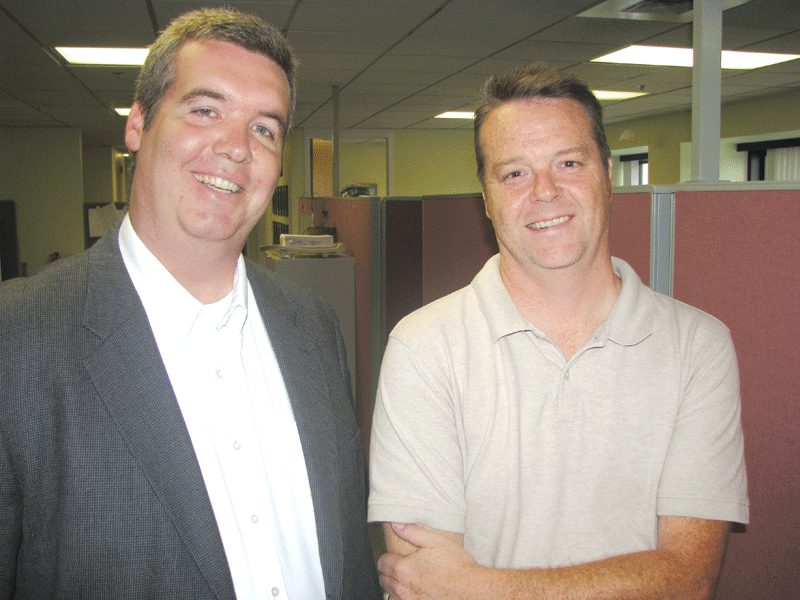
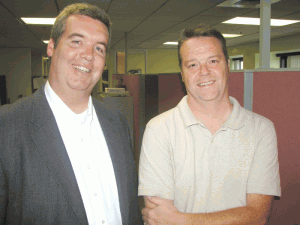
 Terri Judycki is a senior tax manager with the Holyoke-based public accounting firm
Terri Judycki is a senior tax manager with the Holyoke-based public accounting firm 
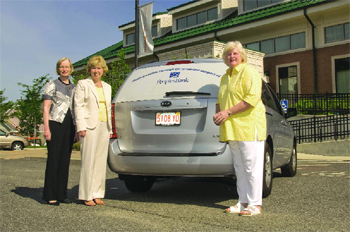
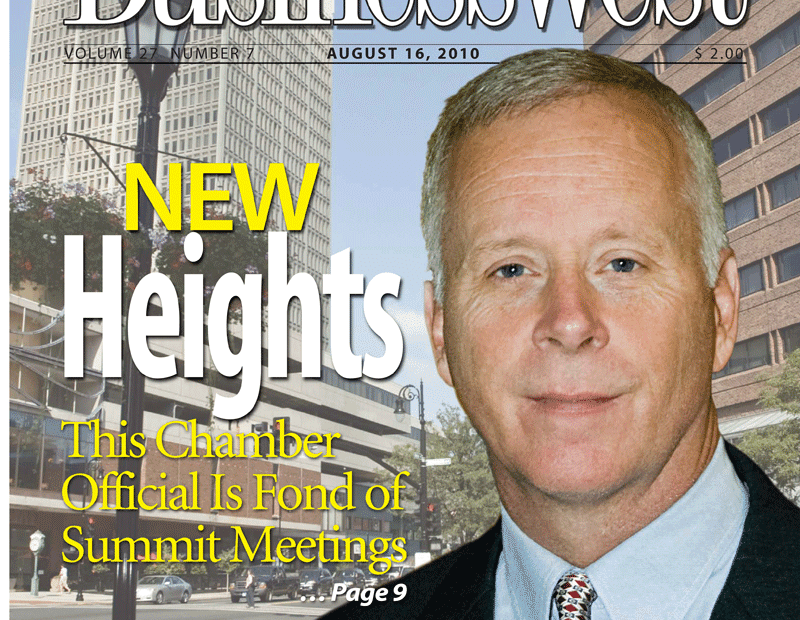

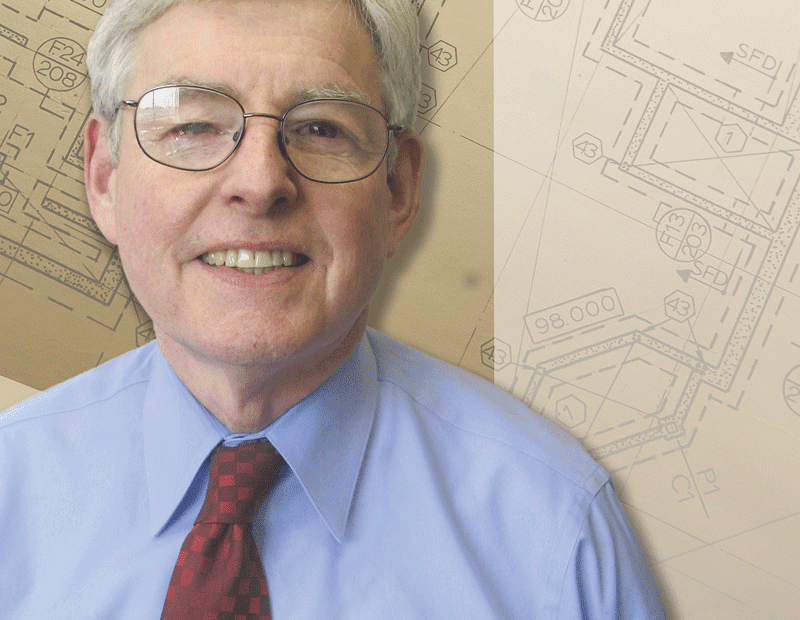

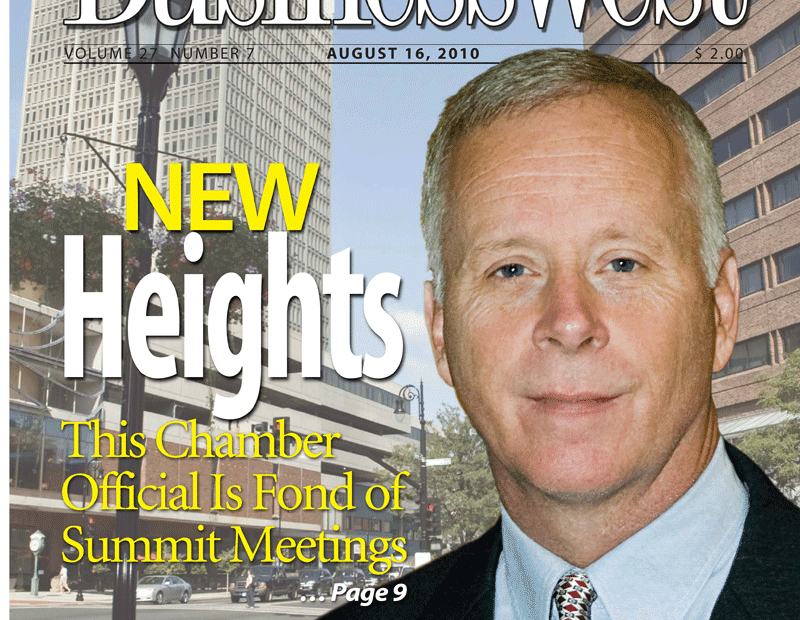
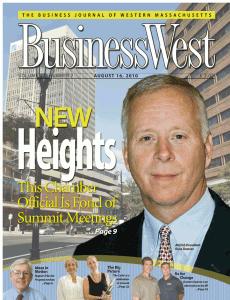


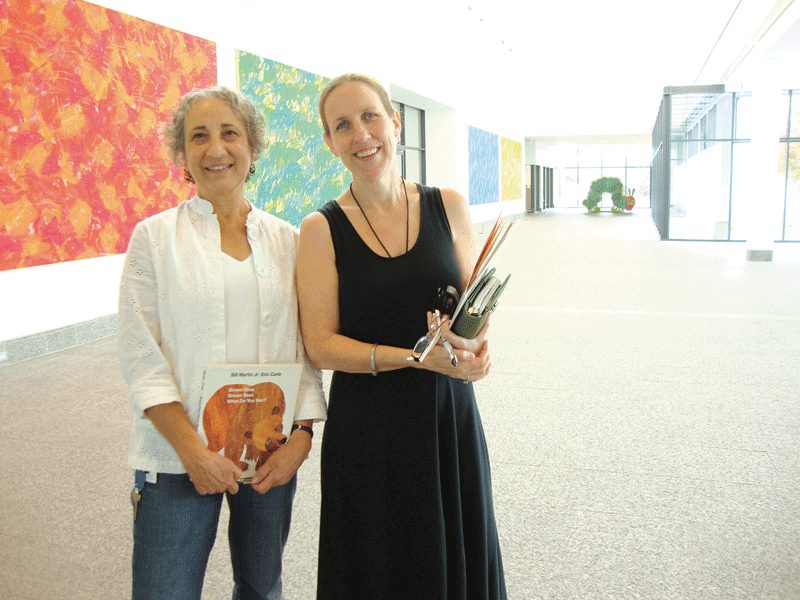

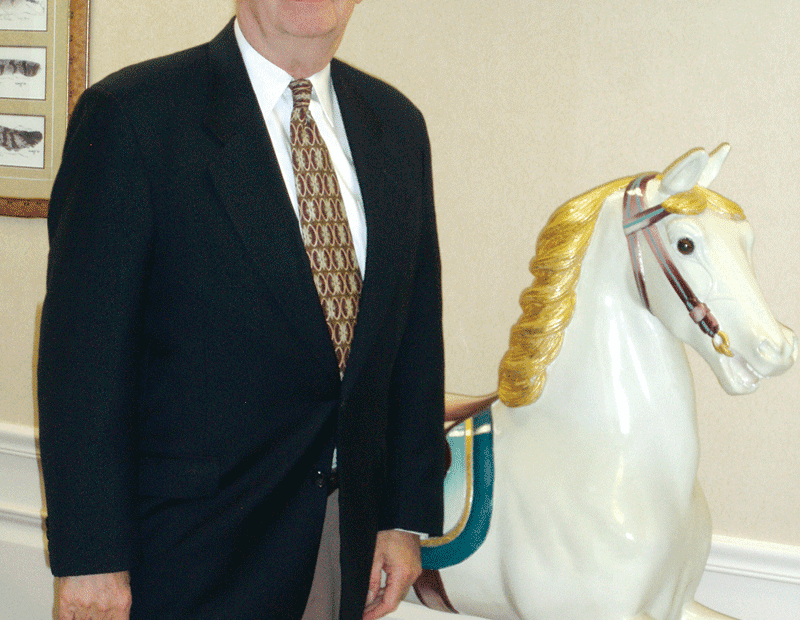
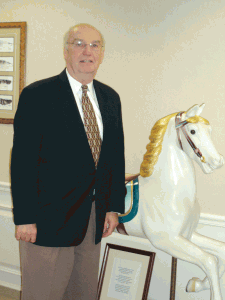

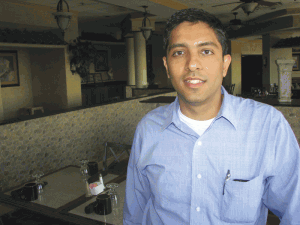
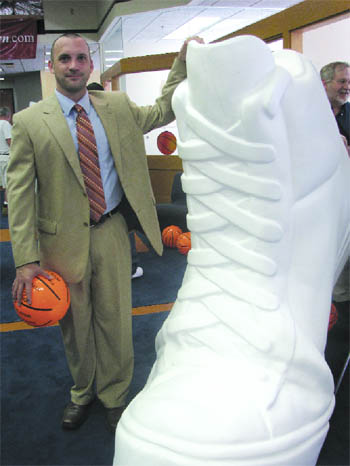
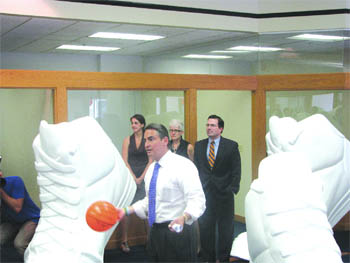
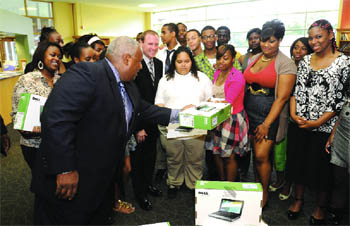
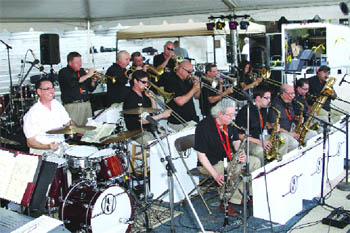
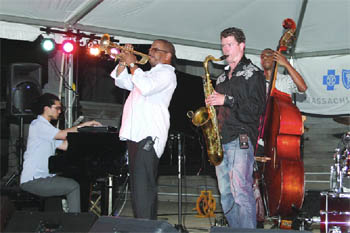

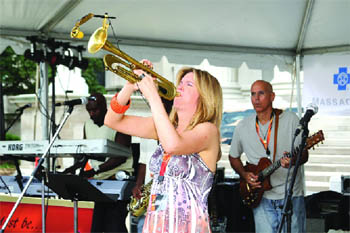

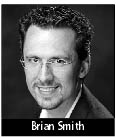 Brian Smith has joined Cambridge College in Springfield as an Admissions Counselor. He is responsible for educating individuals, health care professionals, and businesses in Connecticut and Western Mass. about the Master of Management Program for working adults.
Brian Smith has joined Cambridge College in Springfield as an Admissions Counselor. He is responsible for educating individuals, health care professionals, and businesses in Connecticut and Western Mass. about the Master of Management Program for working adults. 
